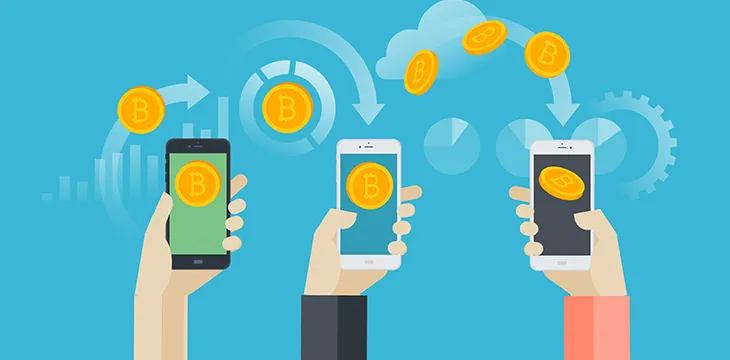|
Getting your Trinity Audio player ready...
|
The recent interest in the NFT craze was totally predictable. When at first the market discovered cryptocurrencies, people took to inventing new blockchains with new tokens in order to raise money for themselves and cash out at the expense of new adopters buying into their projects filled with high promise.
With projects like Ethereum came the ability to create tokens without all the work of actually creating a blockchain platform to go along with it, and so saw the explosion of ICOs, which basically represented investment shares in a technical project in the form of supposed utility tokens. Now the hype is around NFTs, which are non-fungible versions of tokens; non-fungible because they are now meant to represent (whether actually or virtually) some form of asset, digital or real. This new phase is not without its fair share of charlatans and dubious projects as well, but unlike the previous two attempts, this one actually may be the first to have practical uses which could catapult the industry out of its tiny birthing niche and into the global economy.
Think big or go home.
Unlike the previous attempts, this one isn’t trying to imbue value into an otherwise valueless token by sheer might of willpower, ideology or marketing prowess. NFTs are simply taking established value elsewhere and infusing it into a digital token. The token is a digital shell for chattel which has an established value in the outside world. Note, I am not talking about the “collectable” NFTs which are of a purely digital and dubious nature, but the ones which are issued by institutions which can guarantee the assets which back the value of the tokens, namely, stable coins.
Although the quality of the guarantee is based only on the credit quality of the issuer, if done properly, say by a central bank, then this could be the single most useful application for public blockchains since their invention. Also note, I believe that only regulated banks, backed by the legislative power to issue currency, would be able to sufficiently act as a legitimate issuing party to stable coins, or CBDCs. This is because although the value is backed by fiat deposits, participants will need the guarantee of a bank to make good on the ability to withdraw deposits on demand, not to mention only banks can carry the necessary credit worthiness that would be required to hold such large amounts of capital securely.
Contrary to what many in the crypto industry would like you to believe, financial institutions, even post financial crisis, are still the most credit worthy. If 2008 has shown us anything, it is that the government will bail out the banking system rather than let it all fall to pieces. That means, short of a total economic collapse, you can probably trust your bank to be the last one standing, (at least until Amazon, Apple or Google decide to get into banking).
But why would banks want to issue a CBDC on a public blockchain where they have no control over the nodes/servers? Well, one simple answer is that they may simply decide to take a stake in the infrastructure of the blockchain as a part of a CBDC deployment on a public network like BSV and invest into a transaction processing business themselves. One can hope.
But the more realistic reason may be hidden in the simple fact that if they could have built it on a private system, then they would have created one long ago. Digital money technology has been around for decades with early pioneer projects like Digicash, being the first successful digital money. Even though the authorities eventually shut down the project, there was nothing to stop banks from building on the technology themselves and perhaps having existing reserve banks run the needed servers to support the platform, so why didn’t they? The fact that they didn’t alludes to the heart of the issue.
One of the key features of a digital money system is the ability for individuals to be able to transact between themselves without the need for a heavy central server run by the bank which needs to be synchronized and reconciled daily. In order for everything to be kept in sync, the servers are going to have to be online 24/7, as well as be able to resolve discrepancies in ledger records automatically without manual intervention.
Any private centralized system, even if it were to have multiple server nodes would have the problem of staying in sync without constant monitoring not to mention would be costly to protect from cyberattacks. That is where the benefits of a public blockchain start to shine. Because of the fact that there is a shared profit motive in participating and supporting the proper functioning of the system, there is a loose-though-resilient assurance that the services will be maintained consistently, without any administration or supervision. Better still, there isn’t any need for conflict resolution, as any breaks between servers are automatically resolved via the Proof of Work consensus protocol.
Misbehaving server nodes are automatically punished by honest ones by way of lost revenues, ensuring only the honest are profitable. With this public network connecting everyone in the world, for the first time ever central banks could allow their currencies to float in the global markets without the massive technological undertaking that would be required normally. Additionally, with token smart contracts, banks can control and retain the ability to freeze funds that they deem proceeds of crime under legal court orders. They get to have their cake and finally eat it too.
Think about the last time that you made a wire transfer, and how long it took to complete. This is because wire transfers can only be made when the sending bank and a receiving bank both have sent and acknowledged a series of instructions to each other to update their ledgers. Because both banks could be in different timezones, this necessitates the transfer to take at least a full 24h cycle and in practice longer due to the fact that banks don’t have very long working days. The need for humans to confirm and reconcile all the day’s back office settlements is paramount, when any errors discovered necessitates someone calling another human at the other bank to figure out what went wrong.
Imagine now that this same transfer can be immediate. Thanks to the power of blockchain, token contracts that can ensure that exchanges are atomic (one side debits and the other side credits at the same time or not at all), and that the network record of the transaction is publish publicly so that it is recorded by many nodes across the globe for resiliency. All the industry was just waiting for a scalable public blockchain that has fixed low per txn fee for this to be economically viable, and for licensed institutions to participate in this system as issuers of fiat-backed tokens on this global network. We have that now finally, with BSV.
I know that many feel that this is technology may usher in a dystopian 1984-like future, where banks start tracking all our money and where we spend it, and that individuals deemed undesirable by their governments will have their money frozen for no reason. After all, over the past couple of years that thought has crossed a lot more minds than ever before. But this technology, is coming, whether we like it or not. It is best if we accept that it will become a reality and attempt to guide it to positive uses, while making sure that it isn’t abused. The best we can do is to be aware and be active in its development.
In the end, the fact that transactions are public is a protection for individuals as well, because abusive governments will have a record of their abuse globally visible, and undeniable. They will have to answer to the laws that they made for themselves. Which means, if you find yourself living in a country where the laws are unjust, it is probably a good time to think about doing something about getting them changed, or moving somewhere else. The good news is that transparency is a double-edged sword.
I for one welcome our Robot overlords.
To learn more about central bank digital currencies and some of the design decisions that need to be considered when creating and launching it, read nChain’s CBDC playbook.

 07-09-2025
07-09-2025 





